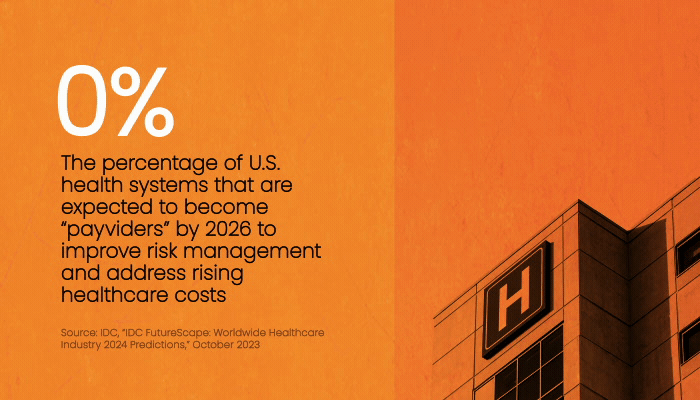An increasing number of health systems are adopting the “payvider” model, in which they provide both healthcare services and health insurance, spurred by the continued move from fee-for-service payments to value-based care and the need to stand out in a competitive market.
“The idea is to support value-based care, where there is better-coordinated care, which should drive improved health outcomes and lower overall costs,” says Matt Pomrink, industry executive adviser for U.S. healthcare at SAP.
Payviders are often at the forefront of digital transformation in healthcare because they have to provide a seamless, integrated experience for their customers.
“The more that payviders can use technology to do transactions and coordinate care efficiently, the more it benefits their organization and patients through cost savings and seamless service,” says Richard Gundling, senior vice president at Healthcare Financial Management Association.
Sentara Health’s Enterprise Data Platform Integrates Operations
At Sentara Health, data used to be siloed, but the organization’s cloud migration has enabled Skeen and his team to build an EDP that unifies care and insurance data, and serves as the foundation for the large provider’s efforts to integrate the two sides of its business and improve customer service, he says.
“The cloud was the right place to start to make data interoperable and help data flow across our platforms and connect,” Skeen says. “It’s a lot simpler and more cost-effective to do it in a cloud environment.”
The EDP, built largely on the Azure Databricks Data Lakehouse platform, has enabled many projects, including new customer relationship management software. CRM will allow call center staff at Sentara Health’s clinical access center to get a complete view of patients and members so they can provide more personalized services, he says.
Three years ago, Sentara Health standardized on Salesforce Health Cloud for patient communication and outreach. To beef up its CRM capabilities, in the past year the health system has adopted Epic’s Cheers CRM software and is integrating data from Salesforce, health records from Epic and insurance data from its payer applications.













